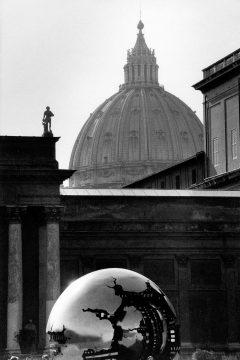 An interview with Wendy Brown in The Drift:
An interview with Wendy Brown in The Drift:
Margaret Thatcher famously said “there’s no such thing as society. There are individual men and women and there are families.” In a way, social distancing tests out the limits (and fundamental incoherence) of this idea. Are we learning anything new?
The extent to which the purpose of social distancing is misunderstood today is an index of the success of the mantra “There is no such thing as society.” So many treat social distancing as just about protecting yourself, so if you choose to go to the beach, the bars, or shopping, or choose not to wear a mask in public spaces, it should be up to you. It’s your life, and you’re free to do what you want with it, take your own risk. The idea that social distancing is actually a collective social pact—a worldwide mutual pact not about any individual but necessary to contain the spread of the virus—is incomprehensible from a perspective in which there are only individuals. So what do we get? Social distancing regarded as an illegitimate political encroachment on individual choice and the retort, “I can do what I want, and no state can tell me otherwise.” Interdependence isn’t just rejected here, it’s illegible, it doesn’t exist—Maggie Thatcher’s dream came true.
How else is the ethos of neoliberal rationality, which you’ve described as transposing democratic concerns into economic ones, shaping our experience of the pandemic?
I think it’s pretty obvious that the preoccupation not only with getting the economy open, but also with the tremendous threat to economic growth that the pandemic produced, together give us the stage on which much of this crisis is playing out.
The economy is predicted to decline or shrink by up to 3 percent this year. Now, that could be a wondrous thing. It could be phenomenal for the planet. It could sustain the crisis-induced reduction in the amount of stupid work many people do—producing useless stuff or useless services. It could reduce consumption of needless stuff, use of fossil fuels, the rate of waste and the pileup of garbage on the planet. It could be an extraordinary lesson in living smaller, better, slower.
More here.

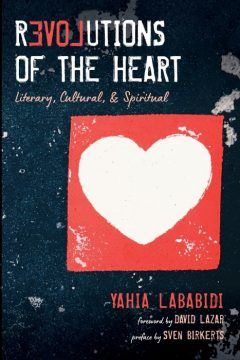 The first thing that strikes the reader about Yahia Lababidi’s
The first thing that strikes the reader about Yahia Lababidi’s  Robert Brenner in New Left Review:
Robert Brenner in New Left Review: An interview with Wendy Brown in The Drift:
An interview with Wendy Brown in The Drift:
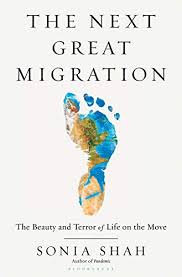 Perhaps the most groundbreaking discoveries of recent years have been in genetic history. It has already been several decades since the study of DNA revealed how little substance there was to claims of racial difference. Study of genetic material found in ancient bones also suggests that, rather than a single migration out of Africa, humans populated the globe in waves that intermingled, coming back as well as going forwards. “We weren’t migrants once in the distant past and then again in the most recent era,” Shah writes. “We’ve been migrants all along.”
Perhaps the most groundbreaking discoveries of recent years have been in genetic history. It has already been several decades since the study of DNA revealed how little substance there was to claims of racial difference. Study of genetic material found in ancient bones also suggests that, rather than a single migration out of Africa, humans populated the globe in waves that intermingled, coming back as well as going forwards. “We weren’t migrants once in the distant past and then again in the most recent era,” Shah writes. “We’ve been migrants all along.”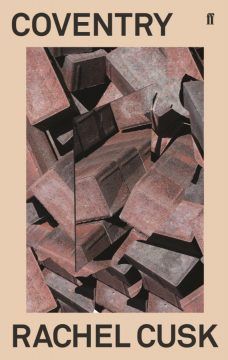 Angela said she had read Cusk’s newest book on the plane over. It slowly dawned on her that the essays in that collection contemplate a variety of ostracisms: from being given the silent treatment by one’s own parents to the exclusion of women writers from the literary canon. Aftermath, Medea, the Outline trilogy – they’re all about being cast out into the wilderness. In an essay called ‘Coventry’ Cusk characterises such exile as ‘ejection from the story’. The only thing to do once you’re ‘living amidst the waste and shattered buildings, the desecrated past’ is to search ‘for whatever truth might be found amid the smoking ruins’.
Angela said she had read Cusk’s newest book on the plane over. It slowly dawned on her that the essays in that collection contemplate a variety of ostracisms: from being given the silent treatment by one’s own parents to the exclusion of women writers from the literary canon. Aftermath, Medea, the Outline trilogy – they’re all about being cast out into the wilderness. In an essay called ‘Coventry’ Cusk characterises such exile as ‘ejection from the story’. The only thing to do once you’re ‘living amidst the waste and shattered buildings, the desecrated past’ is to search ‘for whatever truth might be found amid the smoking ruins’. As a philosopher turned GP myself,
As a philosopher turned GP myself, 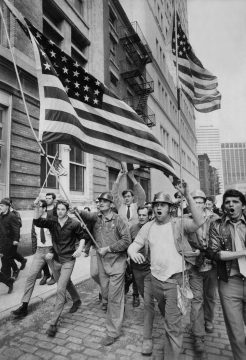 Kuhn, who has written before about white working-class Americans, builds his book on long-ago police records and witness statements to recreate in painful detail a May day of rage, menace and blood. Antiwar demonstrators had massed at Federal Hall and other Lower Manhattan locations, only to be set upon brutally, and cravenly, by hundreds of steamfitters, ironworkers, plumbers and other laborers from nearby construction sites like the nascent World Trade Center. Many of those men had served in past wars and viscerally despised the protesters as a bunch of pampered, longhaired, draft-dodging, flag-desecrating snotnoses.
Kuhn, who has written before about white working-class Americans, builds his book on long-ago police records and witness statements to recreate in painful detail a May day of rage, menace and blood. Antiwar demonstrators had massed at Federal Hall and other Lower Manhattan locations, only to be set upon brutally, and cravenly, by hundreds of steamfitters, ironworkers, plumbers and other laborers from nearby construction sites like the nascent World Trade Center. Many of those men had served in past wars and viscerally despised the protesters as a bunch of pampered, longhaired, draft-dodging, flag-desecrating snotnoses. Megha Majumdar’s polyphonic debut novel,
Megha Majumdar’s polyphonic debut novel,  If you could shrink small enough to descend the genetic helix of any animal, plant, fungus, bacterium or virus on Earth as though it were a spiral staircase, you would always find yourself turning right — never left. It’s a universal trait in want of an explanation.
If you could shrink small enough to descend the genetic helix of any animal, plant, fungus, bacterium or virus on Earth as though it were a spiral staircase, you would always find yourself turning right — never left. It’s a universal trait in want of an explanation. Annexation looks like the executioner of the two-state solution. Israel has changed the facts on the ground, with the rapid growth of settlements rendering that goal less and less viable. But the declaration of sovereignty over parts of the occupied territories, in putting a formal seal on physical realities, will be a new and terrible moment, and above all a fresh injustice to Palestinians.
Annexation looks like the executioner of the two-state solution. Israel has changed the facts on the ground, with the rapid growth of settlements rendering that goal less and less viable. But the declaration of sovereignty over parts of the occupied territories, in putting a formal seal on physical realities, will be a new and terrible moment, and above all a fresh injustice to Palestinians. T
T